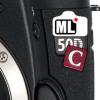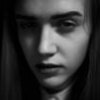Leaderboard
Popular Content
Showing content with the highest reputation on 05/27/2013 in all areas
-
Finally! Graded, exported, edited, uploaded... http://vimeo.com/67023056 Details on Vimeo. Make sure to download the original file. /Edit: By the way.. you might notice some skipping frames, that's probably my fault with making the image sequences. Had some trouble with that... I didn't experience frame skipping during recording.2 points
-

The Diopter Thread.
NAL reacted to Tito Ferradans for a topic
In the end, we never stop talking about these suckers across multiple threads, so I'm gonna try to compile as much information as I can into this one. As in most cases, diopters are cheaper than anamorphics, I ended up with a lot of them, from multiple brands and multiple performances. The key was never go where everyone else is trying to find. Got the classics too, but that was luck. Anyway, let's go to the undeniable favorite: Tokina +0.4 Achromatic diopter. My only complain about it is: why aren't you bigger?! My first lens was the LA7200 and I took quite a while to find the 105mm. The next lenses all had different thread sizes. I could filter the Hypergonar on 77mm or 86mm, the Kowa with 72mm, Sankor 72mm too, Isco 54 at 95mm or 86mm and had a plan of an alternative 86mm front for the Lomo Squarefront, which didn't go through. Anyway, if I started to look for all these sizes of diopters, I'd go broke. My salvation were the Series 9 filters. If someone isn't familiar with these, they come as unthreaded glass, that you put into an adapter that can range between 67mm and 86mm. That pretty much covers all lenses. I got adapters for 72, 77 and 86. The glass itself has around 83mm diameter. Tiffen Series 9 filters are not in production anymore, so you can pick them off cheap ($1-10), even though they're not so common. The adapters are a bit harder to find. After that, I went crazy on other brands as they showed up with decent sizes. Got 77mm Spiratones +0.5 and +0.25 for $6, 86mm +0.6 Fujinon, 72mm +1.25 Fujinon, 95mm +0.25 Pentax (for the 135-600mm Pentax Zoom), 82mm +0.75 Canon (1300H), etc, all very cheap. Some of them are real heavy, and I don't know if they're achromatics or single elements. The advantage of the bigger ones is, less vignetting, even when you go wide, and, the sharpness is increased, since you don't get corner areas. Finally, I found a couple 4.5" ones (around 114mm), that require special adapters, like Series 9. These adapters are impossible to find! I'm making a couple myself, as I trust threads more than tape. :P EDIT Dec 07, 2014 Why Look for Low Powered Diopters There's a common question going around, of WHY fraction diopters are better than full numbers, so I'm addressing that here too. Rich has a good explanation too >here. As you can see below in the math section, the numbers correspond to certain maximum and minimum focus distances. When it comes to anamorphic lenses, what is the most common minimum focus distance? Something between 1.5m and 2m (or 5 to 7 feet, imperial scale). Iscoramas have 2m minimum focus. Kowas, Sankors and most dual focus projector lenses are set to 1.5m minimum focus. For most shots, this distance is greater than the distance you want to put between the camera and your subject, which leads to being unable to focus properly - also, it's a pretty messed up distance for working indoors. What a +0.4 or +0.5 diopter does is turn this "near 2m minimum focus distance" into "near 2m MAXIMUM focus distance" (see math below, seriously), allowing you to frame and shoot freely indoors and much closer to your subjects. If you want extreme close ups, then you need to have stronger diopters, but a +0.5 is a key tool for "standard" shots. Achromats are also better, but they have their own explanation below too. Focus and Anamorphic Compression Another thing that relates directly to diopters is the lens compression. Most of our 1.5x or 2x stretch lenses only have that proportion when focused to infinity. Things change when you twist the focus ring. As you get closer to minimum focus, the less compression you have. 2x lenses tend to go towards 1.7x or 1.8x, Iscoramas get very close to 1.3x. When unsqueezing your footage, this compression disparity can make shots look different from the rest of the footage, as if it was shot with a different lens. In a technical level, it really was a different optical path. Using diopters you get rid of using the shorter distances on your focus ring and keep your compression constant throughout the shots. DISCLAIMER: I don't know how this relates to baby anamorphics, and this CERTAINLY does not affect focus through lenses since you don't change the distance between the anamorphic elements. //EDIT. Strength measuring: Fujinon: The first number is their maximum focus distance, the second number is the thread size. For example, a 16086 reaches 160cm at infinity (+0.6) and has 86mm thread. 190101, 190cm at infinity focus, 101mm thread. Canon: The newest series (250D and 500D) measures in millimeters their maximum distance. 250mm equals +4 and 500mm equals +2. The "D" stands for Double element. The older ones use the same measuring, 1300H = 1300mm, +0.75. There's also a 900H, 105mm, which is a like +1.1. When nothing is marked on it, good luck with testing the thing. It's usually not hard, but most of them have information lying around the web. Thread size: As well as regular threads, some are marked with a C after the number (mostly 86C, 95C and 105C), that means the thread on this filter is coarse, 1mm pitch. Our regular (fine) threads have .75mm pitch. There are adapters for these too, like the one below, from 86mm fine to 86C. http://www.ebay.com/itm/350325079425 Minimum and Maximum focus distance: Just realized that I haven't explained the math relating diopter strength and maximum focus range! Since most anamorphics perform better when focused closer to infinity, a diopter gives great help in "faking" it optically. A close up filter "sets" infinity just a couple meters/feet away, so anything BEYOND that certain point will be IMPOSSIBLE to focus. Of course, this will NOT follow the lens' focus marks. Infinity on the lens now equals the diopter maximum focus distance. Now, the numbers: S = diopter strength (+0.5, +0.6, +1, +2, etc) MaxFm = maximum focus distânce, measured here in METERS MaxFm = 1 / (S) Ha! I bet you expected something waaaay more complex, right? Some examples are never bad, so let's get to it. I'll use +0.5, +1.25 and +2 as sample strengths. MaxFm = 1/(0.5) = 1/(1/2) = 1 x 2/1 = 2 meters MaxFm = 1/(1.25) = 1/(5/4) = 1 x 4/5 = 0.8 meters MaxFm = 1/(2) = 1/2 = 0.5 meters If you live in a country where imperial scale prevails over the metric system, you just gotta do a quick fix to the expression. S = diopter strength (+0.5, +0.6, +1, +2, etc) MaxFf = maximum focus distânce, measured here in FEET MaxFf = (3.3 / S) Same examples from above, now in feet MaxFf = 3.3/(0.5) = 1/(1/2) = 3.3 x 2/1 = 6.6 feet MaxFf = 3.3/(1.25) = 1/(5/4) = 3.3 x 4/5 = 2.6 feet MaxFf = 3.3/(2) = 3.3/2 = 1.6 feet Regarding minimum focus distance, I'd say anything closer than half maximum focus distance is gonna look pretty bad already. With high power close ups (+2 and up), I'd say anything closer than 3/4 of your maximum focus distance is gonna be pretty bad already. Of course, this "minimum focus distance" image quality has A LOT of influence from the anamorphic. Also, achromatic diopters will improve almost everything you could imagine. Since I've just mentioned them, here's a list of achromatic diopters, with their strength, manufacturer, price range, etc. http://fuzzcraft.com/achromats.html Price range: Just for checking, here is a list of the most common lenses and their outgoing price. Tokina +0.5 72mm - $150 Kenko +0.5 72mm - $90 Tokina +0.4 72mm Achromatic - $350 Kenko +0.3 105mm - $350 Canon +2 72mm Achromatic - $100 Sigma +1.6 62mm Achromatic - $20 Angenieux +0.25 82mm - $330 Kinoptik +1 82mm Achromatic - $530 Foton-A +1 or +1.25 - $900 (GONE!) Tiffen +0.5 to +2 138mm - $50 and up Tiffen +0.5 to +5 Series 9 - $1-50 Tiffen/Kodak Series 9 Adapters - $20-40 Tiffen +0.5 to +2 4.5" - $10-50 (RARE)1 point -

Nikon V1 - shooting 4K 60fps raw for $200
alanbraken reacted to Andrew Reid for a topic
http://vimeo.com/61441075 Above - the compressed 2.4k version of 4K raw from the Nikon V1 by Javier Sobremazas There's a dark horse in our midst which very few know about, a camera which can shoot 4K raw at 60fps for $200. Full article1 point -
Been excitedly following all the news of the new Magic Lantern hack and watching videos. I really like what I'm seeing, however most of my attention at first went to all the mark III footage. Now I've discovered some mark II videos and it seems that the image characteristics of those two cameras are very different when shooting RAW video. Mark II now seems more filmic to my eye whereas mark III seems to be better in the technical specs and having much less aliasing problems. This is a new mark II video that brought me to this conclusion: https://vimeo.com/66667784 Which image to you prefer?1 point
-
50D vs 5D Mark II :) Notes and details/settings on Vimeo, and downloadable of course. http://vimeo.com/670849201 point
-
Yeah, I have to fix my workflow. Will try to re-upload the video later, it's a lot of work though... :) Probably will shoot something new today.1 point
-
Thanks Tim! [url=https://www.wetransfer.com/downloads/6277c46a98731a6c795f8f5e6c5c8d5d20130526234611/38ccc37246a862f48ee3d397f664216a20130526234611/cd541e]500MB DNG sequence[/url] Please download and check if the camera skips frames, or if I did something wrong in post. Big chance it's the last option :) If the camera skips frames, that will be fixed. It didn't drop any frame during recording at 1280x960p.1 point
-
I liked the skipped frames. With the music it seemed like a stylistic choice, almost like Gondry's Star Guitar music video. I did note the bus was a bit 'wobbly'. Any chance the rolling shutter could be improved with future builds? But mainly, GREAT WORK JULIAN!1 point
-

Preview: ISO 1600 raw battle 5D Mark III, Kineraw S35, Blackmagic Cinema Camera
mtheory reacted to Andrew Reid for a topic
Graded as closely to match as possible - Download the frames as JPEGs - http://we.tl/0DYPaHNkUG Colour certainly a huge leap from the others on the 5D Mark III at this ISO. White balance and tint vary wildly between the three.1 point -

Stupid Question: What is raw recording?
JackHorror reacted to Julian for a topic
It is exactly like you say. Every frame of the video is a photograph. With the Canon hack you get 24 DNG's (an universal raw standard) per second. The resolution is lower than photographs though, but still you have much more sharpness and dynamic range. It existed before, but until recently a camera that would film in raw would cost you like $20K to $100K. Last year, Blackmagic released the BMCC, it films in raw for $3K. That was a big break though. Beginning this year, Blackmagic announced the Pocket Cinema Camera, raw for $1000 (smaller sensor though), another break trough. Now recently Magic Lantern discovered how make almost every Canon dslr with live view film in raw! The 5D3 works best, bit pricey.. but awesome if you have one already :) The cheaper models like the 550D/600D can do it in low resolution only because of the slower SD card controller. The 5 year old Canon 50D which cost like $300 on eBay can do it in decent resolutions... which is pretty amazing. Exciting times :)1 point -
hack the Sony SLT-A 77 M
Ratguity reacted to CreativeSam for a topic
Hi guys! Does anybody know is it possible to hack Sony SLT-A 77 M? Anybody? Somebosy have to know smth about hacking awesome Sony cameras pretty sure.. - Sam1 point -

Stupid Question: What is raw recording?
JackHorror reacted to Andrew Reid for a topic
Raw is the 'raw data' from the sensor. The sensor captures light, translates it into analogue data then to digital. In order to create an image that digital data must be debayered and processed. Usually this would be done on the camera, but DSLRs don't have as powerful processors as a desktop computer, and need to process the data in real-time at 24fps or even 60fps. Also when raw image data is compressed into a video file, or a JPEG still, it gets baked. It is like cooking a stake. It isn't raw any more :) With raw video you do your cooking later, with all the flexibility to cook the original image in post. You can change and grade the image far more than you can when the camera has already cooked it for you in-camera, and served up a much less tasty dish. The camera is a bad chef.1 point


